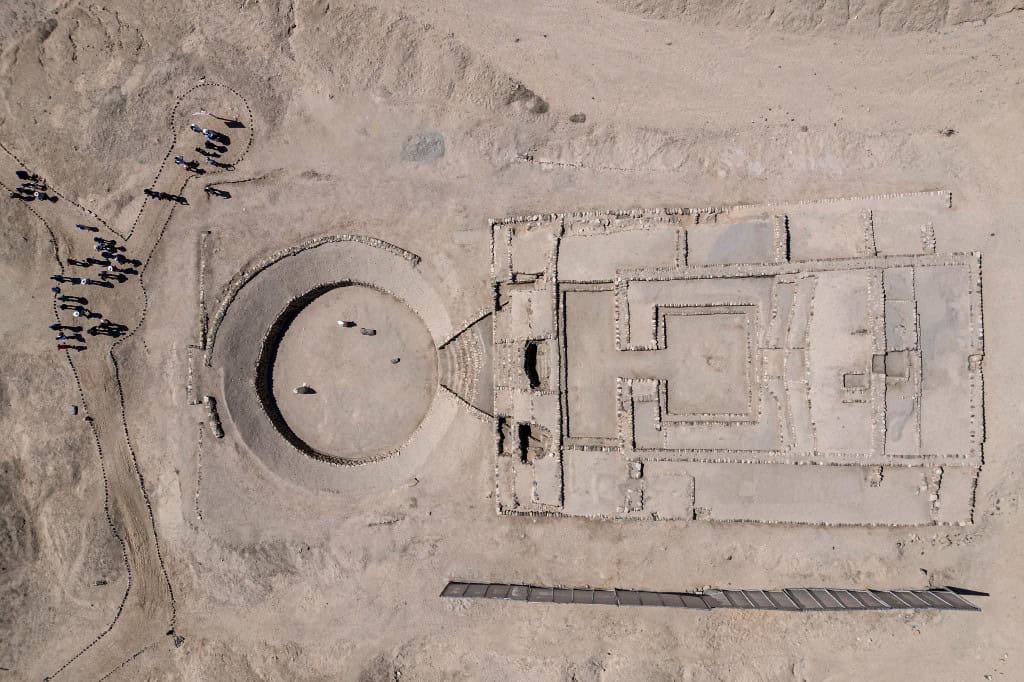A 3,800-year-old citadel belonging to the Caral civilization—one of the oldest in the world—opened its doors to the public this Saturday after eight years of research and restoration work. It is located in northern Peru. The new archaeological site, called Peñico, has been described by its discoverers as “the city of social integration” because it served as a meeting point for commercial exchanges between early Pacific coast communities and those from the Andes and Amazon regions.
Peñico is located in the Supe Valley, 182 km north of Lima and about 20 km from the Pacific Ocean. “It’s an organized urban center that focused on agriculture and trade between the coast, highlands, and jungle,” archaeologist Ruth Shady said. Shady leads the research on the Caral civilization.
“Its age ranges from 1,800 to 1,500 years before Christ, so it’s not as old as Caral,” Shady noted. The monument was built on a geological terrace 600 meters above sea level, parallel to a river to prevent flooding. Researchers believe it was developed around the same time as the first civilizations in the Middle East and Asia.
Shady said its historical importance lies in the new elements it offers to better understand the crisis that the Caral civilization faced. She explained that the crisis was related to climate change, which caused droughts and negatively affected local agricultural activities. “We want to understand how the Caral civilization was formed and evolved over time, and how it entered into crisis due to climate change,” she added.
Its inhabitants were forced to abandon urban centers, similar to what occurred in Northern Mesopotamia, she explained.
Tribute to Pachamama
The opening to tourism began with the sound of pututus (conch shells) and an ancestral ritual offering to Pachamama (Mother Earth), which involves giving the earth agricultural products, coca leaves, and traditional drinks like chicha de jora (fermented corn beverage) to give thanks and ask for prosperity.
The ritual was performed by a shaman, local artists, and community members. “What we’re presenting involves research and the preservation of buildings that are now ready for public viewing with a tourist circuit,” archaeologist Marco Machacuay told AFP.
Under intense heat, dozens of local tourists arrived at Peñico by bus, taking advantage of free entry. “I’m surprised because these hills used to be just sand and barren land. Now that I’ve come back after nearly 25 years, I see that there’s still work to be done,” said 62-year-old engineer Armando Tapia, who came from Lima.
“It’s so important to get to know this place. I feel proud as a person because my roots are from this area,” said 46-year-old administrator Lidia Flores, who visited with her two children. Research by Peru’s Ministry of Culture has identified 18 structures, including buildings and residential complexes.
Among them stands out the Ceremonial Hall of the Pututus, where the musical instruments are depicted on the walls of a square room. In this building, researchers found sculptures made of unfired clay that depict anthropomorphic figures, zoomorphic forms, and ceremonial objects, according to Shady.
Exploration work at Peñico began in 2017, on what was then just a hilly terrain. “We never imagined we’d find buildings and a ceremonial hall beneath the hills,” said Machacuay. The new archaeological site joins others already open to tourism in Caral, such as the Sacred City of Caral, the fishing town of Áspero, and the agri-fishing town of Vichama.
“Peñico represents another link in the long history of Andean civilization,” he stated. Developed between 3000 and 1800 BC, the Caral civilization is considered the mother culture of the Americas. Caral was declared a UNESCO World Heritage Site in 2009.

